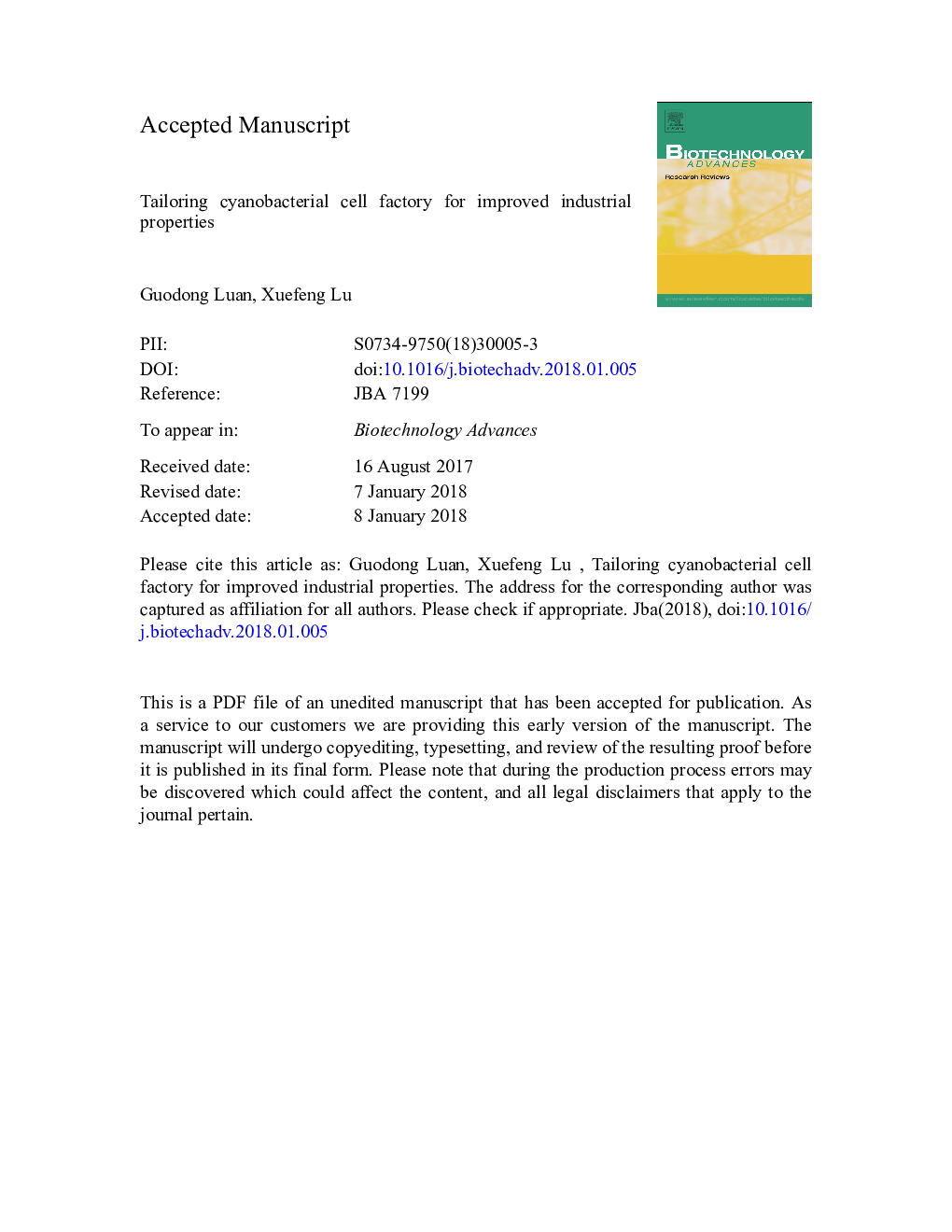| Article ID | Journal | Published Year | Pages | File Type |
|---|---|---|---|---|
| 6486656 | Biotechnology Advances | 2018 | 37 Pages |
Abstract
Photosynthetic biomanufacturing provides a promising solution for sustainable production of biofuels and biochemicals. Cyanobacteria are among the most promising microbial platforms for the construction of photosynthetic cell factories. Metabolic engineering of cyanobacteria has enabled effective photosynthetic synthesis of diverse natural or non-natural metabolites, while commercialization of photosynthetic biomanufacturing is usually restricted by process and economic feasibilities. In actual outdoor conditions, active cell growth and product synthesis is restricted to narrow light exposure windows of the day-night cycles and is threatened by diverse physical, chemical, and biological environmental stresses. For biomass harvesting and bioproduct recovery, energy and cost consuming processing and equipment is required, which further decreases the economic and environmental competitiveness of the entire process. To facilitate scaled photosynthetic biomanufacturing, lots of efforts have been made to engineer cyanobacterial cell properties required by robust & continual cultivation and convenient & efficient recovery. In this review, we specifically summarized recently reported engineering strategies on optimizing industrial properties of cyanobacterial cells. Through systematically re-editing the metabolism, morphology, mutualism interaction of cyanobacterial chassis cells, the adaptabilities and compatibilities of the cyanobacterial cell factories to the industrial process could be significantly improved. Cell growth and product synthesis of the tailored cyanobacterial cells could be expanded and maintained at night and in stressful environments, while convenient biomass harvesting could also be expected. For developing more feasible cyanobacterial photosynthetic biomanufacturing in large scale, we here propose the importance of tailoring industrial properties of cyanobacteria and outline the directions that should be exploited in the future.
Related Topics
Physical Sciences and Engineering
Chemical Engineering
Bioengineering
Authors
Guodong Luan, Xuefeng Lu,
